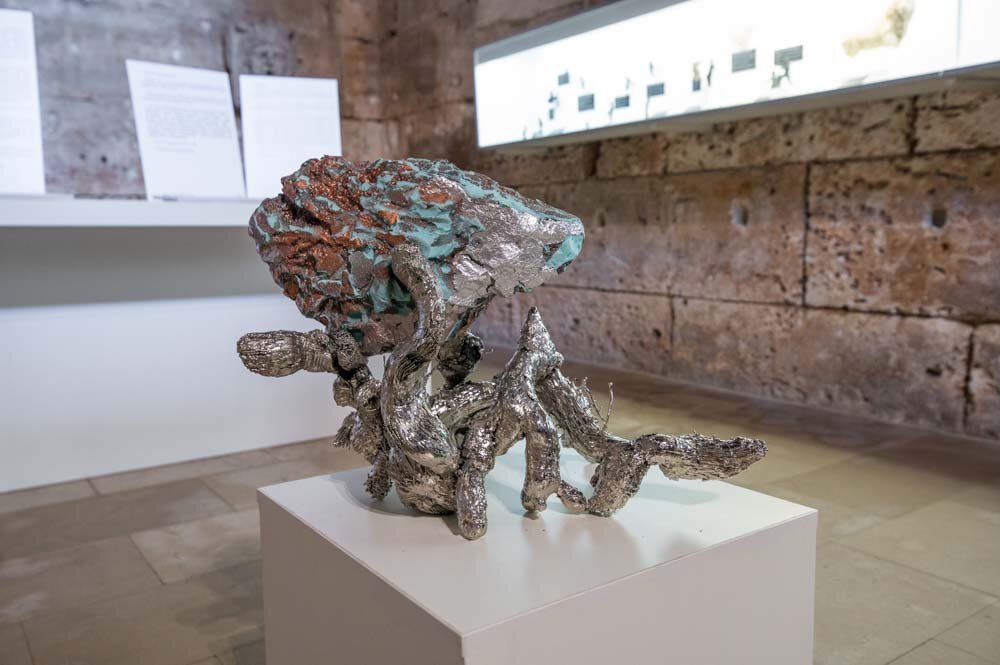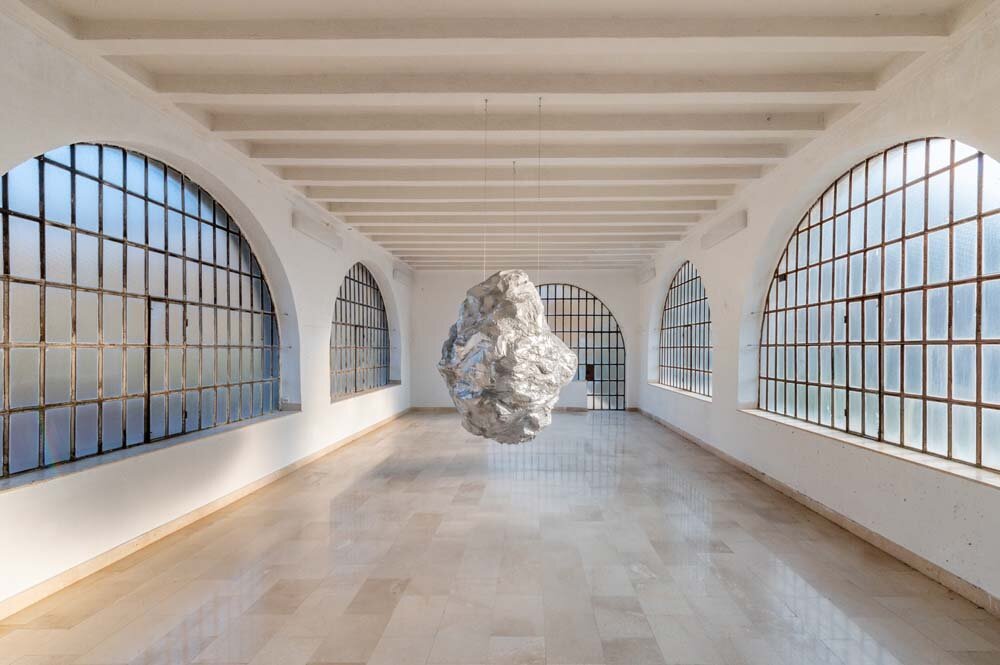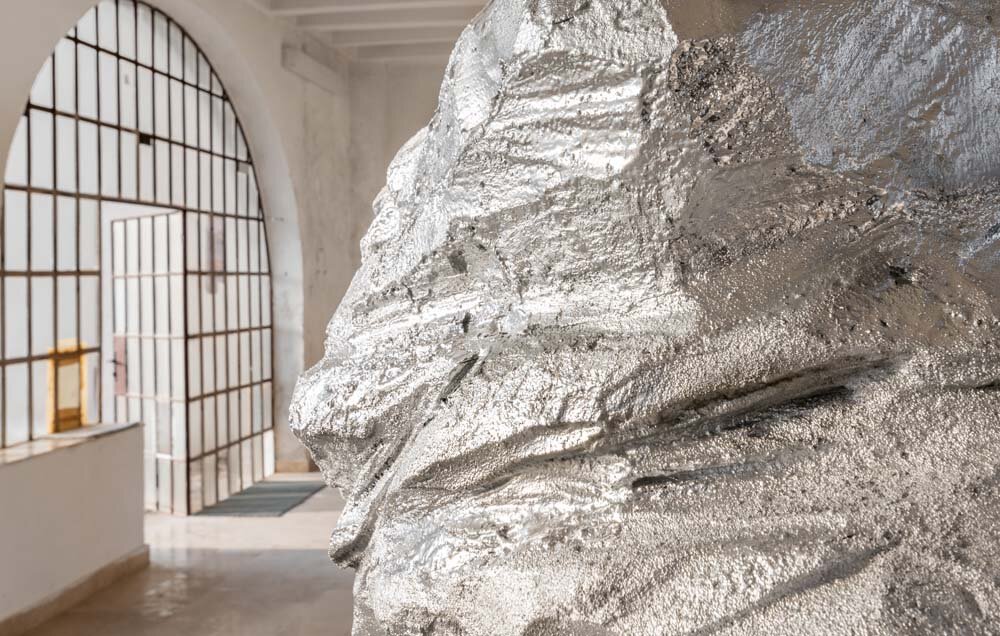212 Medea (Perpetual Silence Prevails in the Empty Space of Capital)
Text by Christian Oxenius
At the dawn of what would become the space race and long before it became one of the most recognised summer tourist centres in Croatia, Pula was one of the world leading centres for astronomical research. The most brilliant scientist to emerge was without a doubt Herman Potočnik, who with his visionary “Das Problem der Befahrung des Weltraums - der Raketen-Motor” (The Problem of Space Travel - The Rocket Motor) would prepare the ground for the research of Wernher von Braun and many other scientists who shaped space travel in the early XX century. But Potočnik did not come from nothing, he relied on the tradition developed in Pula by other astronomers such as Johan Palisa (1848 – 2 May 1925) fifty or so years his senior who became director of the observatory in Pula as commander of the Austro-Hungarian army, of which the Istrian city was the most important port on the Adriatic.
Until here this is a story of men, military men to be more specific, in a race to conquer the ultimate frontier. A rather one-sided, one-gendered story, which has many parallels throughout the world and ages. There is however one short glimpse in Palisa’s life, which probably went unnoticed to him as well, that would lead him to become the starting point of Stefania Strouza’s research for 212 Medea (Perpetual Silence Prevails in the Empty Space of Capital). On February 6th 1880 – I’d like to think of him dressed in his perfectly pressed uniform and with his beard trimmed to fashion – he noticed through his telescope an un-mapped asteroid and for whichever reason decided to name him after the one mythical character than more than others represent the other, the alien, the barbarian, the irrational feminine, the sorceress. Now, almost one and a half centuries later, I’d like to think of this as a gift to a mistress, or maybe a revenge… Certainly we cannot know what prompted the thirty-two old commander to choose it. What we do know is that the number, far less romantic even in its palindrome form, was a consequence of the mechanical system with which men were mapping and measuring the universe at the time, an automatic fire-brand given to each celestial body as if it was cattle needing discerning. So it could be claimed one day?
I can understand why this rather soulless treatment of Medea would spark the initial interest of an artist like Stefania Strouza who has devoted to the study and re-interpretation of her figure a large part of her recent years. Less predictable was, that in the making of this artwork, and in the midst of the covid pandemic, on February 28th, 2020, a large meteorite would disintegrate over Croatia causing a viral media presence and echoing the discovery of Medea 212 one hundred and forty year earlier. Certain is that these two slivers of history cut into Strouza’s life forming the bedrock for the creation of 212 Medea (Perpetual Silence Prevails in the Empty Space of Capital). A complex fictional narrative, composed of her research and the production of two objects referencing celestial bodies, would unfold in the months to follow highlighting the potential threat posed by asteroids in their direct violent impacting potential but also through their capacity to carry alien substances into our ecosystem. By extension, the threat brought about by the asteroid can be mirrored to the perceived threat posed by the feminine to patriarchal societies. In this reading the dawnting presence of 212 Medea acts also as a counter monument to the scars left in the region by the fascist regime, an example of which is the presence of a città di Fondazione (“Ideal town”) like Raša, built for the sole purpose of extracting minerals for the sustenance of the war effort needs of Mussolini’s regime and constructed so to allow the (male) bodies it housed to grow strong nourished and cradled by the toxic masculinity it fostered.
Strouza uses all these elements fused together to construct a narrative unfolding between two physical locations and the virtual space in which we are confronted by our sense of time and nature. Medea, in the complexity of the character constructed by Euripides, stands to represent not only the feminine but, through her magical capacities also a being with deep connections to nature and its destructive/unpredictable powers. This element allows us to make a full circle from the start of the discussion, that famous number given to an inanimate object, an alien one indeed, is in this context the very essence of violence against Medea, forcing her into a logical structure, denying her being outside the schemes devised by men to quantify and control space.
While at first the two sculptures created by Strouza might look alike and create a continuity there are elements within them setting them apart worth noting to unfold the complexity of the narrative she creates. In the smaller work, devised for the tower of Pula’s fortress and imagined as a specimen of the asteroid, the roots on which it rests (a reference to Japanese Suseikis) uprooted and rendered naked, turn the inorganic rock into a cyberg-like organism. By producing such a figure Strouza seems also to suggest the need to move past traditional feminist discourses based entirely on identity politics and into a world in which all things alive, inanimate, earthy and alien come together to question the essence of the dichotomy masculine/feminine by moving into a post-human understanding of matter. But the work does more than bringing these theories to us, by treating this as a specimen and imagining it s a subject of a scientific analysis she also seems to point to the danger such discourses are in succumbing to current and prevailing rationalization processes. The larger work instead, conceived for Raša functions instead much more as a memento to the chthonic destructive power inherent in those elements. Placed hovering in mid-air the sculpture captures a moment or rather a thought just before its impact as a warning and reminder of the power hidden within Medea’s psyche and her rage against the injustices of men like Jason, described in Euripides’ text as adikos (e.g. v. 580), unfair/unjust, a quality also used to describe the world (of men) as a whole by Medea. Suspended, the work seems to invoke the silence Strouza recalls in the title, as a powerful moment of self-reflection we are called upon when considering the feminine within the narrative she develops. That moment captured by the hanging object however also echoes in the silent space underneath it, an emptiness filled already by the imagined impact but also an emptiness already present in the abandonment of the mines, of the lifestyle the planners had in mind when drafting the town and most of all a collective emptiness of a society which was abandoned by the capitalist ideology that brought it about through industrialization.
1. The project’s title is an appropriation of Palisa’s Medea 212 asteroid. By inverting the position of Medea, the artist underlines and adds emphasis to 212 being yet another variation of Medea’s myth.









All Artworks © Stefania Strouza
212 Medea (If only I had stayed the animal I was) 2020 metallised cane roots, insulation foam, spray-paint, aluminum foil, pins 53 x 34 x 39 cm
212 Medea (Perpetual Silence Prevails in the Empty Space of Capital) 2020 expanded polystyrene foam, plywood, epoxy resin, varnish 230 x 150 x 120 cm
All Photos © 3rd Industrial Art Biennial
Stefania Strouza (1982) is a visual artist currently living and working in Athens.
Strouza’s practice explores how cultural narratives of diverse epochs connect to produce new identity projects. It examines the spatial mobility of such narratives, the exchange of forms and symbols across large distances, and the cross-cultural syncretisms that emerge from it. The artist materializes these ideas through sculptural works and installations that draw associations between the symbolic world of objects and notions of temporality, geography and the body.
Her work has been featured in exhibitions at Pinta Miami 2018, the Thessaloniki Biennale of Contemporary Art, the Bauhaus Foundation Dessau, a.antonopoulou.art (solo), the Wiener Art Foundation (solo), the Neue Galerie Innsbruck (solo), the Athens & Epidaurus Festival (solo), the BOZAR Foundation in Brussels, and the National Museum of Contemporary Art in Athens, among others. In 2019 she participated in the exhibition The Palace at 4 a.m. at the Archaeological Museum of Mykonos with a new work commissioned by NEON Organisation.
Strouza has received numerous accolades such as the ARTWORKS Award of the Stavros Niarchos Foundation, the Emerging Artists Award of the National Bank of Greece, and the Diploma Award of the Academy of Fine Arts Vienna. She has been an artist-in-residence at the Seeger Center for Hellenic Studies in Princeton University, US (2016), the Bauhaus Foundation Dessau, DE (2016), in Mexico City, MX (2018) with the support of the Austrian Federal Chancellery, at MANA Contemporary New Jersey, US (2019) and CCA Andratx in Mallorca, ES (2020).
With prior graduate studies at the School of Architecture of the National Technical University of Athens (2007), Strouza also holds an MFA in Environmental Art from the Edinburgh College of Art (2010) along with a degree in Fine Arts from the Academy of Fine Arts Vienna (2016). She is currently a PhD candidate at the Architecture Department of the University of Thessaly with the support of the NEON Organisation.
Με την οικονομική υποστήριξη του Υπουργείου Πολιτισμού και Αθλητισμού



